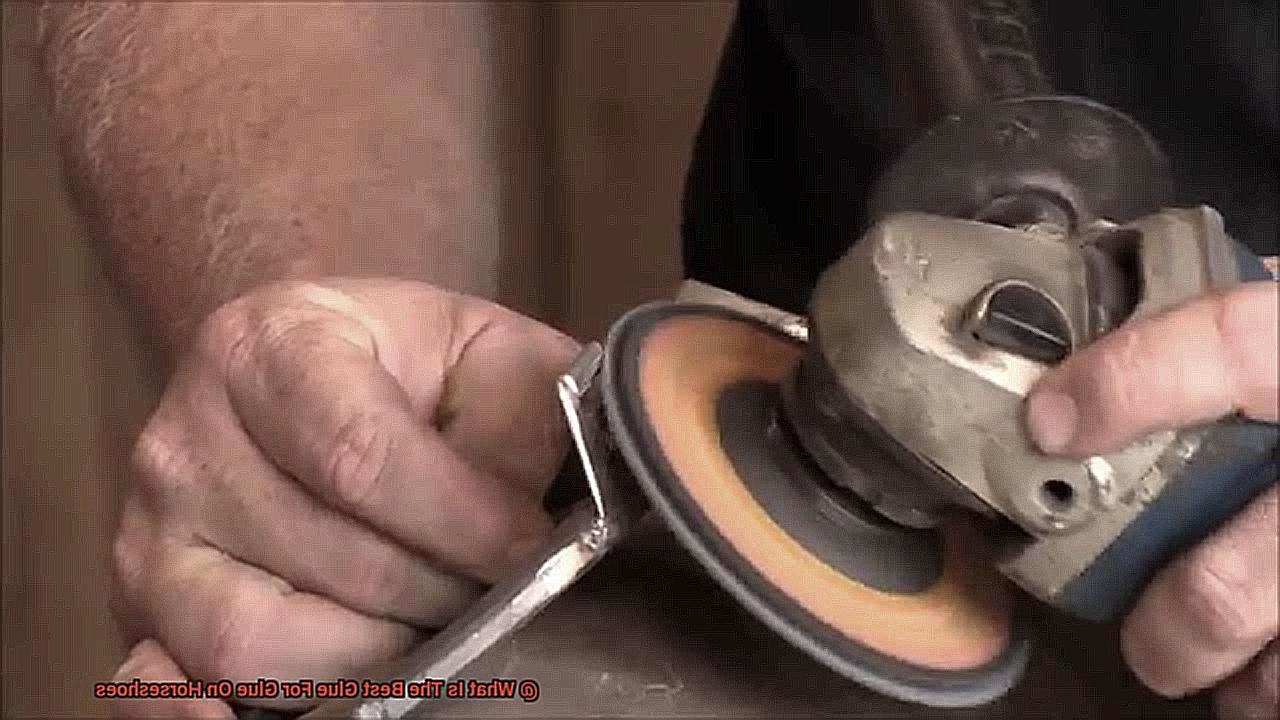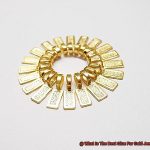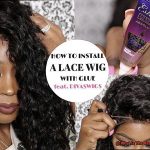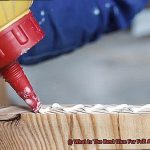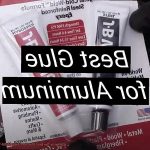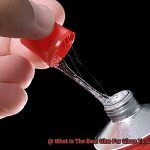Do you dread the thought of your lace wig slipping off during a crucial moment or leaving behind an unsightly residue? You’re not alone. Gluing a lace wig can be a daunting task, but when done correctly, it can completely transform your appearance. With so many adhesive options available, choosing the right glue for your wig can be tricky.
Lace wigs have gained immense popularity due to their natural-looking appearance and versatility. They are made from either human hair or synthetic hair attached to a lace base that closely resembles the scalp. Adhesive is what keeps the lace wig in place, making it essential to find the correct glue for your wig.
In this blog post, we’ll delve into the best glue for lace wigs, factors to consider when selecting an appropriate adhesive, and how to apply them effectively. Join us as we explore which glues work best for different lifestyles, budgets, skin types, and wig textures. We’ll weigh up the pros and cons of liquid adhesives, tape, and wigs without glue. By the end of this blog post, you’ll feel more confident in picking the perfect glue that suits your lifestyle and hair needs.
What is a Lace Wig?
Contents
Lace wigs have become increasingly popular in recent years, offering a natural-looking and comfortable option for those looking to switch up their hairstyle or cover hair loss. So, what exactly is a lace wig?
A lace wig is a type of wig that features a sheer lace base or cap. The hair strands are hand-tied onto the lace, creating the illusion of a natural scalp and hairline. This material not only provides maximum comfort but also allows for breathability and flexibility.
There are two main types of lace wigs: full lace wigs and lace front wigs. Full lace wigs have a base that covers the entire head, making them ideal for more styling options such as high ponytails or updos. On the other hand, lace front wigs have a base that only covers the front part of the head, giving a natural-looking hairline without wearing a full wig.
Lace wigs can be made from either human hair or synthetic hair. Human hair lace wigs offer a more natural look and can be styled and colored just like natural hair, but they are more expensive than synthetic wigs. Synthetic hair lace wigs are more affordable and require less maintenance, but they may not look as natural and cannot be styled with heat.
When it comes to wearing a lace wig, choosing the right glue is crucial for a secure fit. Water-based glue is a popular choice because it is easy to apply and remove, gentle on the skin, and can last up to one week before needing to be reapplied. Solvent-based glue provides a stronger hold and lasts up to two weeks but can be more difficult to remove.
Types of Glue for Lace Wigs
When it comes to attaching a lace wig, the glue you use plays a crucial role in ensuring a secure and long-lasting hold. With so many types of glue available in the market, it can be overwhelming to choose the right one for your needs. In this section, we will explore the different types of glue available and their benefits.
Water-based Glue:
Water-based glue is a popular choice among lace wig wearers who have sensitive skin. This type of glue is non-toxic and does not contain harsh chemicals that can cause irritation or allergic reactions. It is easy to apply and remove, leaving no residue on the scalp or hairline. The clear finish provides a natural-looking hold that blends seamlessly with your skin.
Silicone-based Glue:
Silicone-based glue is another option for securing lace wigs. It is known for its strong hold and waterproof properties, making it ideal for those with an active lifestyle. It can withstand sweat, humidity, and even water activities like swimming. However, it can be difficult to remove and may require the use of a special solvent. People with oily skin can benefit from using silicone-based glue as it provides a secure hold without sliding or shifting.
Solvent-based Glue:
Solvent-based glue is a popular choice for people who sweat heavily or live in humid environments. It provides a strong and long-lasting hold that can withstand moisture and humidity. However, this type of glue can be harsh on the scalp and may cause irritation or allergic reactions in some individuals. It is important to do a patch test before applying solvent-based glue to your skin.
Tape Adhesive:
Tape adhesive is a gentle alternative to traditional glue that is easy to apply and remove. It comes in various shapes and sizes, making it easy to customize according to your needs. Tape adhesive is also gentle on the scalp and does not cause any irritation or allergic reactions. With tape adhesive, you don’t have to worry about any residue or damage to your wig or scalp.
Ghost Bond:
Ghost Bond is a popular brand of glue that is specially designed for lace wigs. It provides a strong and waterproof hold that can withstand sweat, humidity, and water activities. The clear finish dries quickly and blends seamlessly with your skin, making it virtually invisible. Ghost Bond is ideal for those who want a secure and natural-looking hold without any mess or residue.

Water-Based Glue
If you’re searching for a reliable and safe adhesive to secure your lace wig, look no further than water-based glue. As an expert in this field, I can confidently say that water-based glue is a popular choice among wig wearers for several reasons.
Firstly, it’s easy to apply and dries clear, providing a natural look that blends seamlessly with your scalp. Plus, it can be easily removed with water or a gentle adhesive remover without causing any damage to your wig or scalp.
Unlike other types of adhesives, water-based glue is non-toxic and does not contain harmful chemicals. This makes it perfect for individuals with sensitive skin or allergies to other types of adhesives. It also provides a strong hold without causing irritation to the scalp or damaging the lace material.
To ensure the best results when using water-based glue to secure your lace wig, it’s important to apply it evenly and wait until it becomes tacky before attaching your wig. This will guarantee that your wig stays in place throughout the day without any discomfort or slippage. Additionally, using a scalp protector or barrier cream can prevent any potential irritation.
While water-based glue may not provide the longest-lasting hold compared to other adhesives like silicone-based glue, it is still a reliable and safe option for securing your lace wig. In fact, many people prefer water-based glue because of its ease of use and gentle formula.
Solvent-Based Glue
Solvent-based glue is known for its strong bonding properties, creating a tight seal between the wig and scalp that can withstand even rigorous activities.

However, it’s important to be aware of the potential risks associated with this type of adhesive. Solvent-based glue contains volatile organic compounds (VOCs) which can be harsh on the skin and cause irritation or allergic reactions in some people. To minimize these risks, it’s crucial to choose a high-quality, medical-grade adhesive that is safe for use on the skin.
Medical-grade adhesive is specially formulated to be safe for use on the skin and is commonly used in hospitals and medical settings. Not only is it waterproof, but it can also last for several weeks before needing to be reapplied. When using solvent-based glue for your lace wig, make sure to follow the manufacturer’s instructions carefully. This may include applying the glue in thin layers and allowing it to dry completely before attaching the wig.
It’s essential to exercise caution when using solvent-based glue and to use a solvent-based adhesive remover to remove the wig when necessary. Proper application and removal techniques can help minimize the risk of skin irritation or allergic reactions.
Considerations When Choosing the Right Glue for Your Lace Wig
Ladies, let’s talk about one of our favorite accessories: lace wigs. We all love them because they offer versatility and natural-looking hair. But before you can rock your lace wig with confidence, you need to choose the right glue to keep it in place. With so many options available, how do you know which one is right for you? As an expert in this field, I’m here to help.
When it comes to choosing the perfect adhesive for your lace wig, there are several key factors to consider. Let’s delve into each consideration one by one:
Type of Lace Wig:
The type of lace wig you have is the first consideration when choosing the right glue. There are two main types of lace wigs: full lace wigs and front lace wigs. Full lace wigs have a base made entirely of lace, while front lace wigs have a lace base only at the front hairline. The type of glue you use will depend on the type of wig you have.
Duration of Wear:
Another important factor to keep in mind is how long you plan to wear your wig. If you’re only planning on wearing your wig for a few hours, then a lighter hold glue or adhesive may be suitable. However, if you plan on wearing your wig for several days or even weeks, then you need to choose a stronger hold glue or adhesive.
Skin Sensitivities:
It’s essential to consider any allergies or sensitivities that you may have when choosing a glue or adhesive. Some glues and adhesives contain harsh chemicals that may cause skin irritation or allergic reactions. Therefore, it is crucial to choose a glue that is specifically designed for sensitive skin.
Climate and Environment:
Finally, consider the climate and environment where you will be wearing your wig. If you live in a hot and humid climate, you may need a stronger hold glue to prevent your wig from slipping or shifting due to sweat and humidity. On the other hand, if you live in a cooler climate, a lighter hold may be enough.
Patch Testing the Glue Before Use
But before you apply that glue to your scalp, there’s one simple yet crucial step you must take: patch testing.
Patch testing the glue before use is an absolute must, and it should never be overlooked. This test helps determine whether or not you are allergic to the glue and prevents any allergic reactions that can cause discomfort or even damage to your scalp.
To conduct a patch test, apply a small amount of glue to an inconspicuous area behind your ear or on the nape of your neck. Then, wait for at least 24 hours to see if there is any redness, itching, or irritation. If there is no reaction, then the glue is safe to use.
However, different glues may contain various ingredients that can affect how your skin reacts to them. Therefore, it’s crucial to perform a patch test for each new glue you use. By doing so, you can ensure that the glue is safe for use on your scalp.
During the testing period, make sure that the area where you applied the glue doesn’t come into contact with water or sweat. Any contact with water or sweat can interfere with the results of the test and cause false negatives. So, be careful and avoid any contact with water or sweat during this period.
In summary, patch testing the glue before use is an essential step that must never be skipped. It helps prevent any allergic reactions and ensures that the glue is safe for use on your scalp. So, remember to patch test each new glue you use and avoid contact with water or sweat during this period.
Following Manufacturer’s Instructions for Application and Removal of the Glue
If you want to keep your lace wig in top-notch condition, it’s essential to follow the manufacturer’s instructions for applying and removing the glue. Each brand of glue has unique guidelines, so be sure to read them carefully to prevent damaging your scalp or wig.
The first step is crucial: make sure your scalp is squeaky clean before applying the glue. You can use a scalp cleanser or clarifying shampoo to remove any oils or residue. Then, follow the manufacturer’s instructions for applying the glue. Start with a small amount and build up gradually if needed. Applying too much glue in one go can cause harm to both your wig and scalp.
When it’s time to take off your wig, do not rush into it. Using a solvent specifically designed for wig glue removal will do wonders. Do not tug or pull at your wig as this can cause damage to both the wig and your natural hairline. Be patient and gentle while removing the wig.
It’s important to note that using strong adhesives frequently can harm both your natural hairline and your lace wig. So, give your hair a break between applications and opt for gentler adhesives if possible.
DJj_0oU5HmQ” >
Conclusion
In conclusion, selecting the perfect glue for your lace wig is paramount to achieving a secure and realistic hold. With countless adhesive options on the market, it can be daunting to find the right one that caters to your unique needs. However, by taking into account factors such as the type of lace wig you have, how long you plan on wearing it, any skin sensitivities you may have, and the climate or environment you’ll be in, you can make an informed decision.
Water-based glue has gained popularity among wig enthusiasts due to its user-friendly application process, gentle formula, and natural-looking hold. It’s an excellent option for people with sensitive skin or those who want a reliable yet safe adhesive. Conversely, solvent-based glue provides a robust and long-lasting hold but may contain harsh chemicals that can cause irritation or allergic reactions.
No matter which glue you opt for, patch testing before use is imperative to prevent any allergic reactions or discomfort. Additionally, following the manufacturer’s instructions for applying and removing the glue is crucial to maintain both your scalp and wig’s optimal condition.
By considering these essential factors and adhering to best practices when applying and removing the glue, you can confidently flaunt your lace wig without worrying about slippage or damage to your natural hairline.

